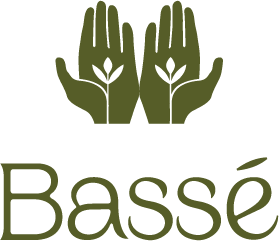Blog

Combining Ibogaine and Somatic Experiencing for Maximum Trauma Healing
The nervous system plays a crucial role in our emotional, physical, and psychological well-being. Overwhelming or traumatic events can leave lasting imprints on both the mind and body, often contributing to patterns of addiction, anxiety, depression, chronic pain, or a general sense of disconnection from ourselves, the world, and others. Ibogaine therapy benefits individuals by helping to reset the brain’s neurochemistry and interrupt these trauma-driven cycles, but long-lasting healing requires more than a reset—it requires somatic (body-based) integration.
In this blog, we’ll explore how Ibogaine and nervous system regulation work together, the scientific and cultural significance of Ibogaine, and how alternative therapies for addiction recovery—like Somatic Experiencing for trauma healing—can create lasting transformation.
Understanding the Scientific and Cultural Significance of Ibogaine and Its Effects
Ibogaine is a naturally occurring psychoactive alkaloid derived from the Tabernanthe iboga plant, traditionally used in spiritual ceremonies by Indigenous Bwiti practitioners for deep healing of the mind, body, and spirit, as well as profound self-discovery. New research on the effective application of Ibogaine therapy continues to emerge, shedding light on its ability to support those struggling with addiction, trauma, chronic pain, and nervous system dysregulation by interrupting conditioned patterns in the brain and body. In modern clinical settings such as Bassé, Bwiti wisdom—alongside cutting-edge research—continues to inform the application of this powerful medicine, with intention, preparation, and integration at the core of an effective treatment cycle to achieve long-term results.
How Ibogaine Works in the Brain
Ibogaine affects multiple neurotransmitter systems, particularly glutamate, serotonin, and dopamine, which play key roles in mood regulation, addiction, and emotional processing. Studies suggest that Ibogaine can significantly reduce withdrawal symptoms and cravings, creating neuroplasticity—a window of opportunity for change in the brain—that allows individuals to break free from chemical dependency and destructive thought patterns that negatively impact mood, self-concept, and perception.
Recent research studies show that Ibogaine can:
- Eliminate acute opioid withdrawal symptoms within 24 hours and dramatically reduce cravings, with effects lasting for weeks to months.
- Interrupt opioid, alcohol, and stimulant addiction cycles.
- Promote neuroplasticity and neural regeneration.
- Reduce symptoms of PTSD, anxiety, and depression, especially among veterans with traumatic brain injuries.
- Potentially alleviate chronic pain or provide support in chronic pain management.
One client, who had struggled with long-term opioid addiction, described the experience as “a complete reset of my cravings and emotional triggers. For the first time, I felt like I had a real chance at recovery.” However, despite the relief they felt after treatment, they later realized that without somatic integration, they still risked falling back into old patterns when faced with the stress and environmental triggers of their daily life. This underscores the importance of integrating somatic therapy with Ibogaine to ensure that healing extends beyond the initial experience.
The Visionary Experience of Ibogaine
Beyond its neurochemical effects, Ibogaine induces a deeply introspective state, often described as “10 years of therapy in 12 hours.” During this experience, individuals may revisit past traumas, the source of unconscious emotional wounds, or deep-seated cognitive, emotional, and physiological patterns that have influenced their behaviors and relationships. While this part of the Ibogaine treatment can be profoundly healing, it can also overwhelm the nervous system—especially for those with complex trauma histories.
Additionally, because Ibogaine therapy occurs in an altered state, insights, emotional releases, and breakthroughs need to be revisited and integrated in a conscious state for the healing process to fully take hold. If these experiences remain unprocessed on a somatic level, they may fade, leaving individuals right back where they started before treatment—or worse, feeling disoriented, confused, or emotionally raw once the Ibogaine experience wears off.
One trauma survivor undergoing Ibogaine therapy recalled experiencing a flood of memories and emotions during their treatment. While the visions provided clarity, they also left them feeling ungrounded and emotionally raw. This is where Somatic Experiencing for trauma healing and nervous system regulation proved invaluable—helping them regulate their emotions, integrate insights into their real-world experience, and develop a deeper, conscious witnessing of their life events, emotions, and resilience.
As the field of psychedelic-assisted therapy expands, the combination of Ibogaine and nervous system regulation techniques like Somatic Experiencing represents a new frontier in trauma-informed healing. By combining somatic therapy with Ibogaine, individuals can ensure that the insights gained during treatment translate into sustainable, embodied healing, rather than remaining disconnected or fleeting realizations.
Integrating Somatic Experiencing with Ibogaine treatment
While Ibogaine and nervous system regulation go hand in hand, Ibogaine alone does not retrain the body to sustain that regulation. Many individuals remain trapped in cycles of hyperarousal (fight-or-flight) or hypoarousal (shutdown and dissociation) long after trauma has passed. Somatic Experiencing offers a gentle yet powerful body-based approach that supports completion of the stress response by releasing stored traumatic energy and restoring flexibility to the nervous system. This results in an individual who has greater presence, capacity, and choice in how they respond to both internal and external stimulation.
Why the Body Matters in Trauma Healing
Neuroscience confirms that trauma is not just stored in the brain—it is held in the body as unresolved survival energy. Even after Ibogaine therapy clears old mental patterns, individuals may continue to feel on edge, disconnected, or physically tense due to residual trauma in the nervous system. While Ibogaine therapy benefits are backed by research, it is not a magic pill, an overnight fix, or an easy solution to undo a lifetime of physical and emotional pain. True healing takes time, commitment, and conscious effort.
By integrating somatic therapy with ibogaine, individuals can:
- Discharge stored trauma (also called survival energy) without re-triggering distress
- Experience relief from chronic pain rooted in emotional trauma
- Expand their capacity to witness sensation and experiences
- Rebuild a felt sense of safety in the body
- Repair boundary violations and reconnect with their core self
- Increase their vitality and availability for healthy connection
A veteran who had undergone Ibogaine therapy for PTSD described their experience as “life-changing, but also overwhelming.” Initially, they felt profound relief, but in the weeks that followed, they noticed that their body still reacted strongly to stress triggers. Through Somatic Experiencing, they learned to titrate (process trauma in small, manageable doses), which allowed them to fully integrate the healing initiated by their Ibogaine treatment.
Somatic Tools to Enhance Ibogaine Therapy
Integrating somatic therapy with ibogaine involves specific techniques that help individuals stay present in their bodies during and after treatment.
- Grounding and orienting exercises help individuals anchor themselves in the present moment, preventing them from becoming overwhelmed by Ibogaine’s intense experiences and supporting them in coming back to the present if they dissociate.
- Body scans and sensation tracking help individuals locate where trauma is stored in the body and gently release tension.
- Safe touch exercises, such as placing a hand on the heart or abdomen, stimulate the vagus nerve, which activates the parasympathetic nervous system (responsible for rest and digestion).
- Titration allows individuals to process trauma in small, manageable doses, reducing the risk of emotional overwhelm.
- Pendulation works by encouraging individuals to shift between states of discomfort and safety, helping them develop nervous system flexibility.
By practicing moving between states in a controlled and conscious way, individuals train their nervous system to regulate more efficiently, rather than becoming stuck in cycles of hyperarousal or shutdown. These somatic tools enhance the effectiveness of Ibogaine therapy by ensuring that nervous system regulation is reinforced and embodied, leading to long-term emotional resilience and sustained healing.
A client who had long suffered from PTSD and severe dissociation shared that Ibogaine therapy allowed them to access memories they had blocked out for years, but it was somatic therapy that helped them feel safe enough to stay present with those memories. This powerful combination enabled them to fully process their past without shutting down, leading to true integration and sustained healing.
A New Era of Healing
True healing is both mental and physical. While Ibogaine therapy benefits include a powerful nervous system reset, lasting transformation occurs when individuals also learn how to consciously regulate their bodies and emotions through Somatic Experiencing.
If you’re ready to explore the powerful combination of Ibogaine and Somatic Experiencing, or you’d like to learn more about this cutting-edge approach, please contact us to discuss how Ibogaine therapy at Bassé can support your journey!
